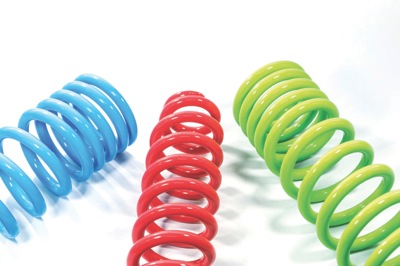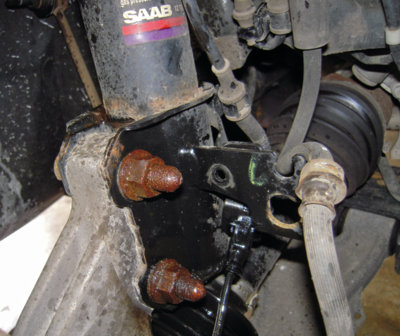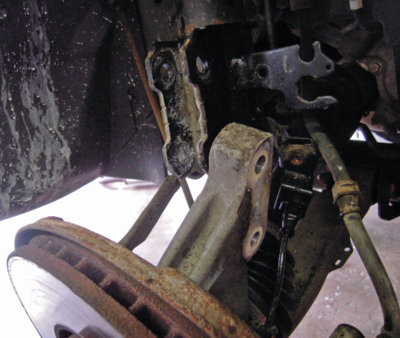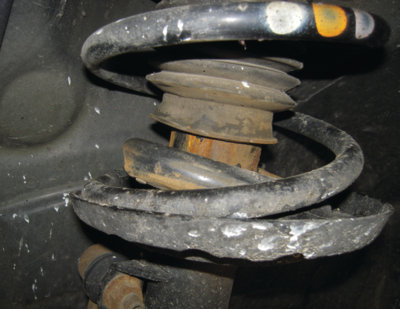
Springs and struts are prone to a few suspension issues, especially in harsher northern climates. The front strut bearings can start creaking, and then bind up, and we’ve seen more than a few front and rear coil springs break due to corrosion. So, let’s discuss what you can look for when you encounter one of these vehicles.
Most of the time the customer complaint will be “I hear a rattle in the front when I go over bumps.” Technicians have all heard those complaints and usually they’ll find loose sway bar links or worn ball joints or tie rod ends.
On Saabs, take a close look at the springs, both front and back. Sometimes it’s not easy to see the broken spring because it’s just the bottom coil that has broken off. Other times, especially in the case of this 2004 9-3 we’re working on, it’s easy to see the broken spring. The 9-3 is based on GM’s Epsilon platform and shares the same suspension design, with a few tweaks from Saab.
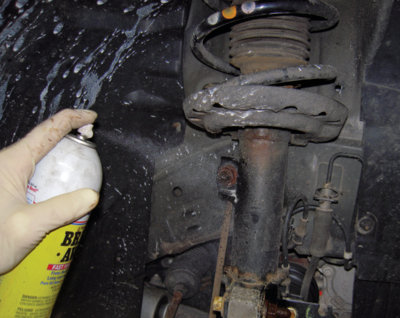
We can see the broken spring (see Figure 1), as well as the three colored dots that help us identify which spring we’ll need for the job.
- Remove the upper retaining bolt for the sway bar link (see Figure 2). There is no need to remove the complete link, unless it’s worn and you’re replacing the link.
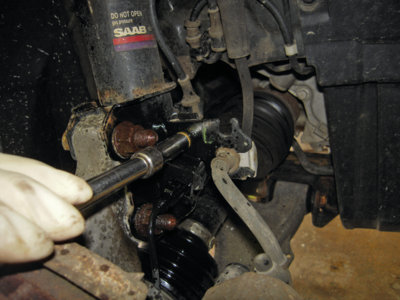
Figure 3 - Remove the one bolt that holds the strut bracket to the strut, and then remove the brake hose from the strut (see Figures 3 and 4). There are only two bolts that hold the strut to the steering knuckle (see Figure 5).
Note: There is no camber adjustment in the front of this car, so we won’t necessarily need to recheck the alignment. However, any time suspension work is done on any car, it’s a good opportunity to recommend one.
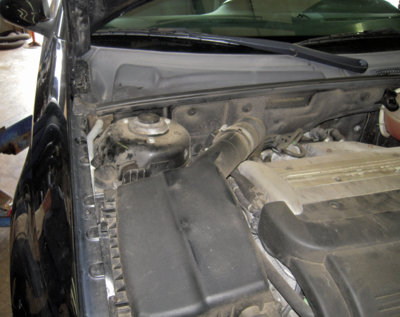
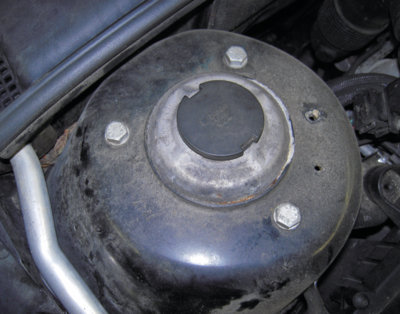
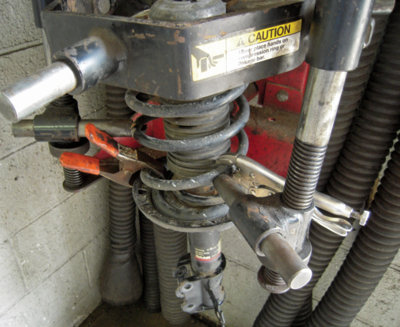
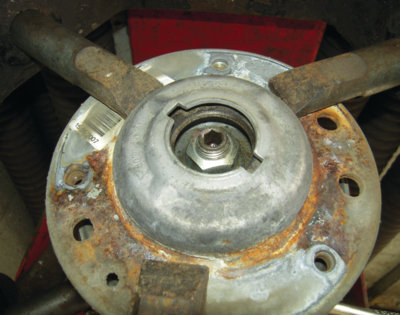
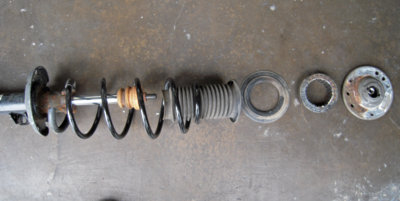
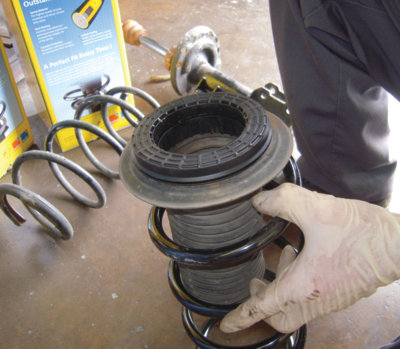
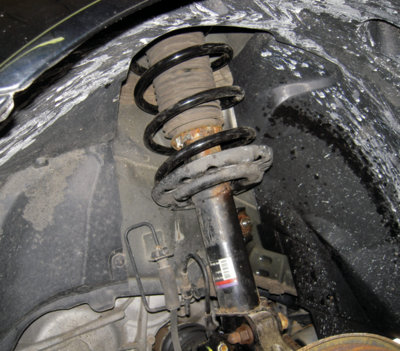
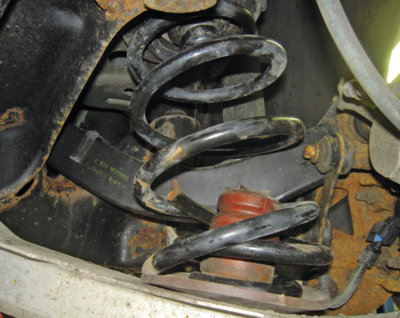
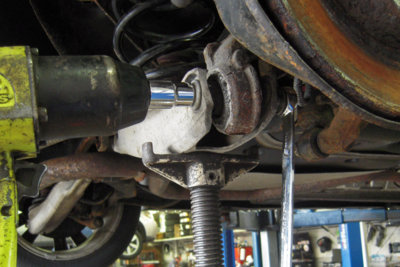
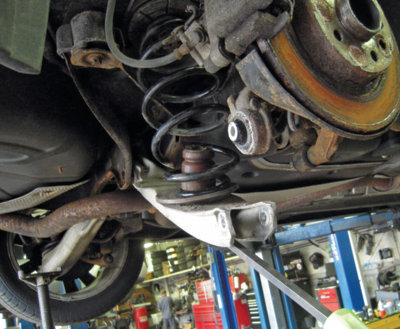
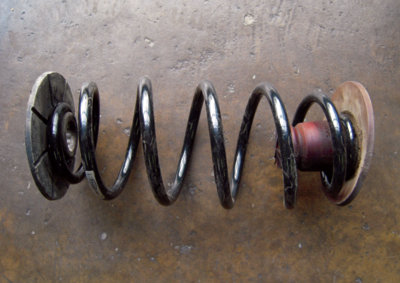
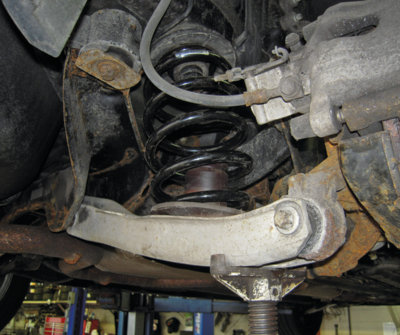
- Lower the car and remove the three bolts that hold the upper strut mount (see Figures 6 and 7). Any decent spring compressor will work, so compress the spring and remove the upper bolt (see Figures 8 and 9). The strut is ready to come out, so you can now swap the springs.
- Pay attention to how the strut comes apart so you can put it back together correctly (see Figure 10). The order is spring, boot, insulator, bearing and top mount. We won’t be replacing the strut or mount because they were done 40,000 miles ago, but if they weren’t, this would be a good time to recommend replacement.
- Put the boot in the new spring, put on the insulator and then insert the new bearing (see Figure 11).
- You’re now ready to put the strut back together and put it back in the car (see Figure 12).
- Broken rear springs are usually easier to spot (see Figure 13), and much easier to replace. Support the rear control arm and remove the one retaining bolt that holds it to the rear knuckle (see Figure 14).
- A small pry bar is all that’s needed to pull the control arm down far enough to remove the spring (see Figure 15).
- Remove the rubber insulators from the old spring and push them into the new spring (see Figure 16). Set the new spring into position and, using a screw jack, push the control arm back into position so you can reinstall the retaining bolt (see Figure 17).
Remember that any time you tighten a suspension bolt that goes through a bushing, it should be done with the vehicle at ride height.
- When doing this job, take a look at the sticker on the inside of the driver’s door jam. You’ll need the suspension code to be sure you get the correct springs. The first two digits on the bottom row are the front spring code and the next two are the rear spring code.
You can see that spring replacement on these vehicles is relatively simple and it’s easy to see when the rear springs are broken. Since it’s sometimes not as easy to see the broken front springs, be sure to take a closer look during your inspection. The perception may be that these cars are hard to work on or parts are hard to get, but that is not the case. There is a good supply of dealer parts when needed and there are also many good aftermarket parts available.
Even though Saab is no longer making cars, the ones on the road now should be with us for at least another six to 10 years. So, if a Saab comes into your bay, don’t send it down the road and miss a good opportunity. There is a good chance with a thorough inspection that a Saab will turn into a better-than-average invoice.

